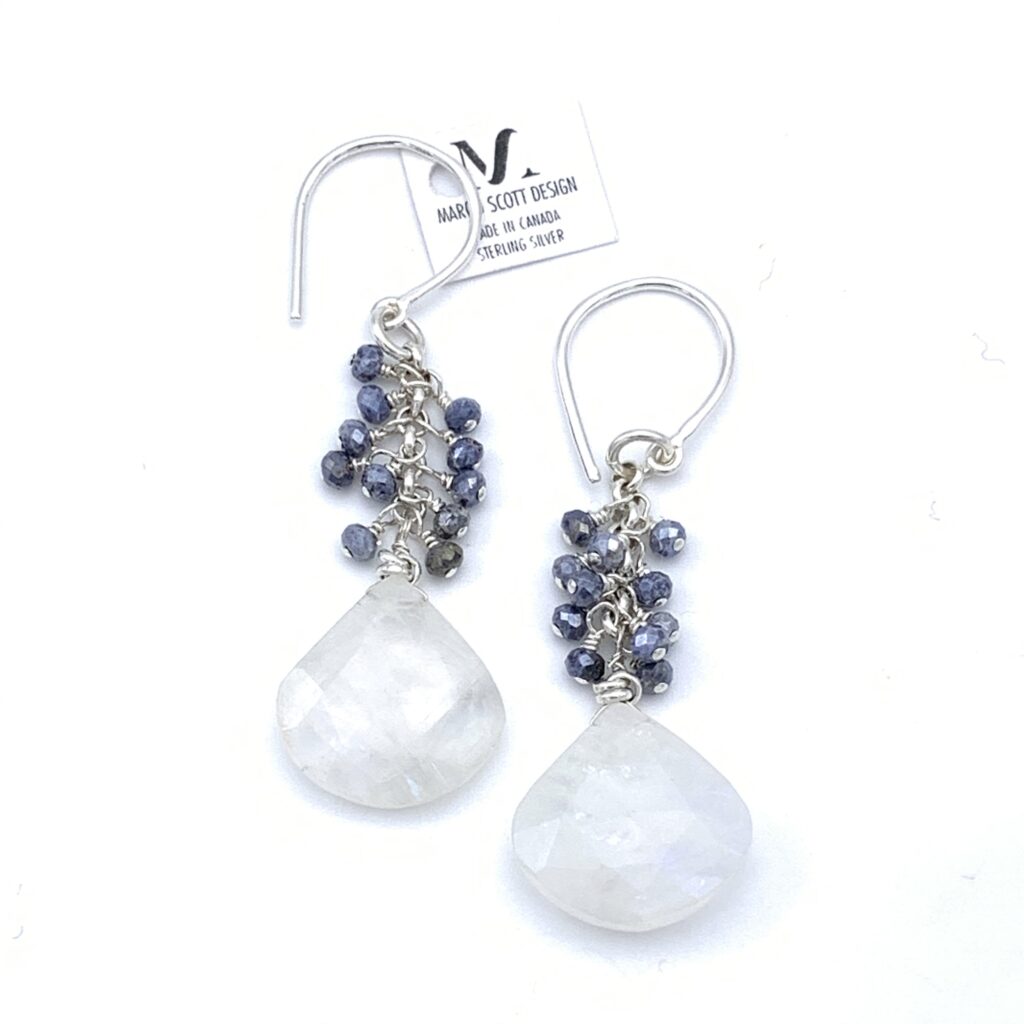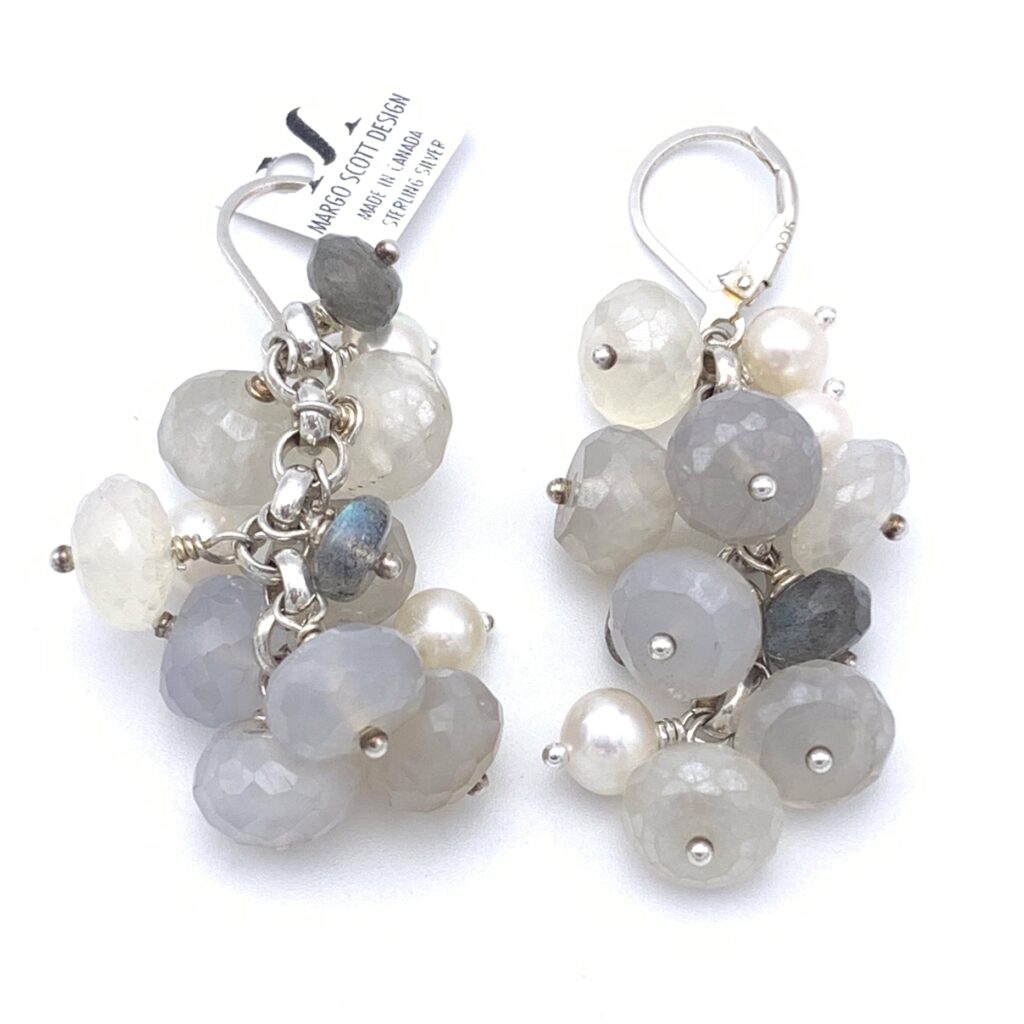About Rainbow Moonstone
Rainbow moonstone is transparent labradorite, a closely related feldspar mineral with sheen in a variety of iridescent colours. Although it’s technically not moonstone, it’s similar enough that the trade has accepted it as a gem in its own right. Today some people prefer it to traditional moonstone. https://www.gia.edu/gia-faq-rainbow-moonstone-really-moonstone.

Rainbow Moonstone is a variety of the feldspar-group mineral orthoclase. During formation, orthoclase and albite separate into alternating layers. When light falls between these thin layers it is scattered producing the phenomenon called adularescence. Adularescence is the light that appears to play across a gem. Other feldspar minerals can also show adularescence including labradorite.
Legends say that moonstone brings good luck. Many believed that you could see the future if you held a moonstone in your mouth during a full moon.
Adularescent moonstone was once called “adularia.” The name originated with a city in Switzerland, Mt. Adular (now St. Gotthard), that was one of the first sources of fine-quality moonstone.
Great designers of the romantic Art Nouveau era, such as René Lalique and Louis Comfort Tiffany, featured the pale gem in custom jewelry. Moonstone was also a favorite among artisans of the Arts and Crafts era in the last half of the nineteenth century, who used it in handcrafted silver items.
During the 1960s “flower child” movement, moonstone provided its wearers with the desired ethereal look, and designers of the 1990s New Age movement again turned to moonstone’s natural beauty for inspiration.
Moonstones come in a variety of colours.

Unlike most coloured gemstones it is not entirely the colour of a moonstone that determines the value of a Moonstone.
Moonstones are valued on their glowing sheen that seems to float on their surface. Moonstones come in white, grey, pink, yellow, orange, brown and red colours, each with their own natural beauty but it is the gloss or shimmer that appears to be almost liquid on the surface that creates value.
The base color of Moonstones is caused by mineral impurities that mixed with the Silicon and Aluminum chemicals as the crystals were being formed. The variety of chemicals and minerals that were combined by intense heat from erupting magma were, for some time, molten rock.
After the volcanic activity ceased the rocks began to cool and harden and, as they did so, the minerals separated into thin layers. Later as gemstones, the light that hits these thin layers gets deflected and reflected which is displayed as shimmering colours. The thinner the layers, the rarer it is and the more blue the colour. This blue colour is most often seen in the Rainbow Moonstone, which is actually a form of Labradorite but generally considered a type of Moonstone. https://www.gemselect.com/english/gem-info/moonstone/moonstone-info.php.

The spiritual meaning of Moonstone
With its ethereal colour, it’s no wonder that Moonstone is surrounded by mythology and spiritual energy. In the ancient world from east to west, these gemstones were believed to fall from the sky!
Moonstone’s obvious association with the moon itself has lead it to be often seen as possessing feminine powers such as intuition, creativity, nurture and unconditional love.
White Moonstone embodies the moon at its most powerful point, boosting perception and foresight.
Orange Moonstone is balancing, reduces stress and anxiety and brings luck.
Yellow Moonstone will give you clear dreams and a peaceful night’s sleep.
Blue Moonstone can help heal a broken heart and find a new love in your life.
As you can see they have similar calming properties and are calming.


No comments yet.